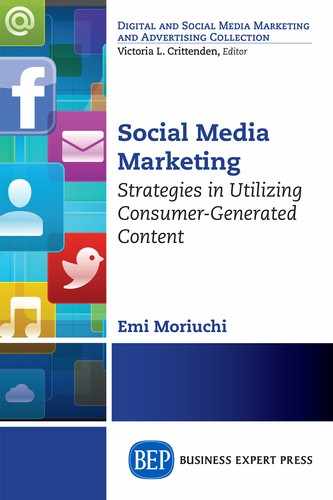Abstract
With the introduction of the Internet, consumers have been relying heavily on the media for content. The popularity of consumer-generated content (CGC) has captured the consumer (i.e., user) as the producer, which has caused a power shift in the market from companies to consumers. When technology is paired with culture, it is inevitable that consumers constantly change their attitudes toward consumption to adapt to current trends. Thus, marketers are meticulously looking for information to stay current with the consumer market in order to maintain their market share. CGC is closely related to electronic word-of-mouth (eWOM) and is found on various online review sites, forums, blogs, company websites, and social media platforms. Consumers’ contribution toward the content on different digital media sites (including a company’s website) is voluntary, either paid (e.g., sponsored) or nonpaid (e.g., personal blogs). It is evident that information that is published online travels faster to consumers than when delivered through traditional media such as television. Thus, companies are trying to be proactive and, as a part of their promotional efforts, are turning to online media for the latest information on their target market, feedback on their company (e.g., criticism, praises), and information on their competitors. However, despite the convenience of knowledge transfer via the Internet, there are still disadvantages of the use of CGC. The goal of this book is to educate business owners, marketing practitioners, students, and marketing researchers about the use of CGC and how it is beneficial for their marketing plan.
Keywords
consumer behavior, consumer decision-making, consumer-generated content, content marketing, cross-national, culture, marketing communication, process, social media, storytelling
